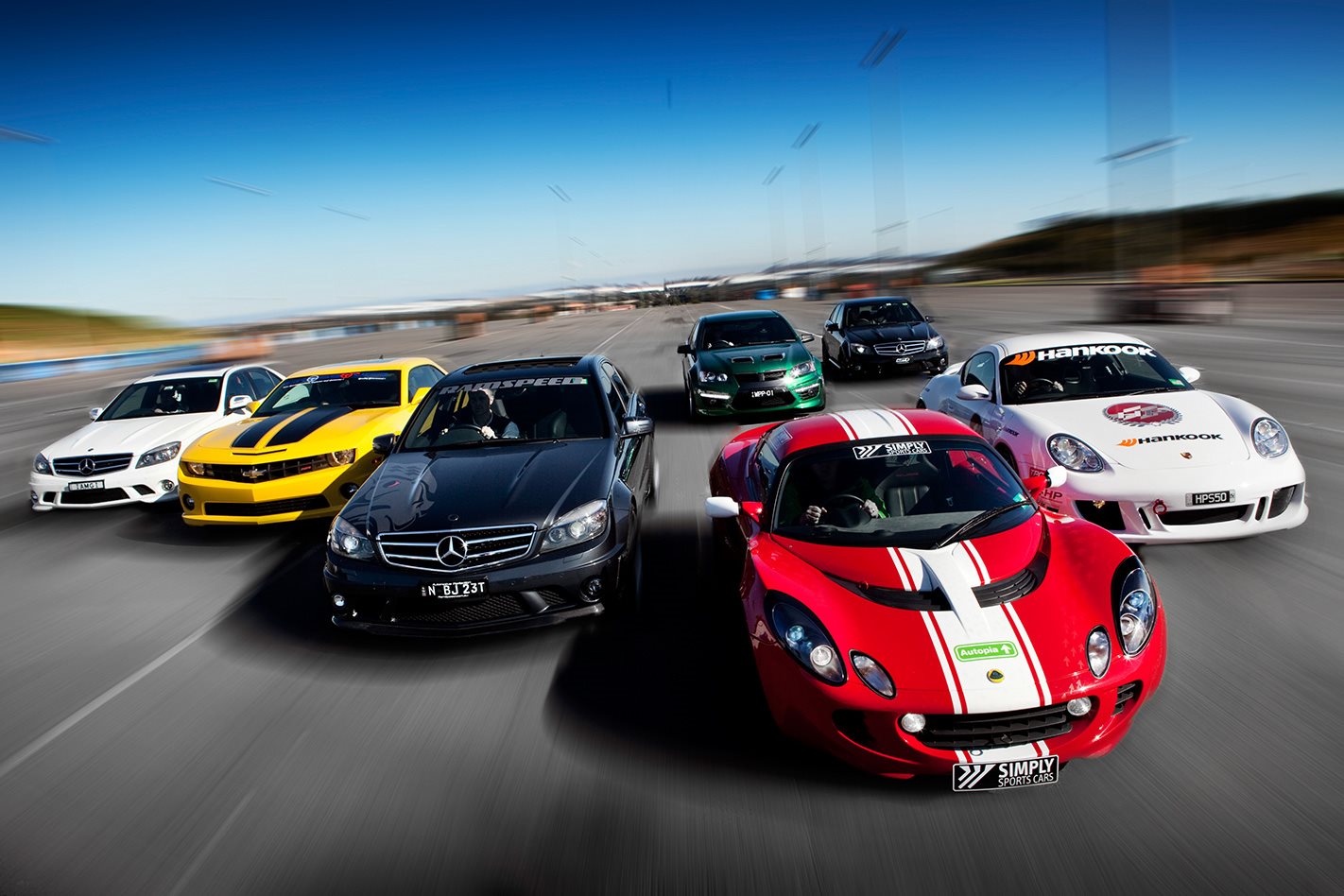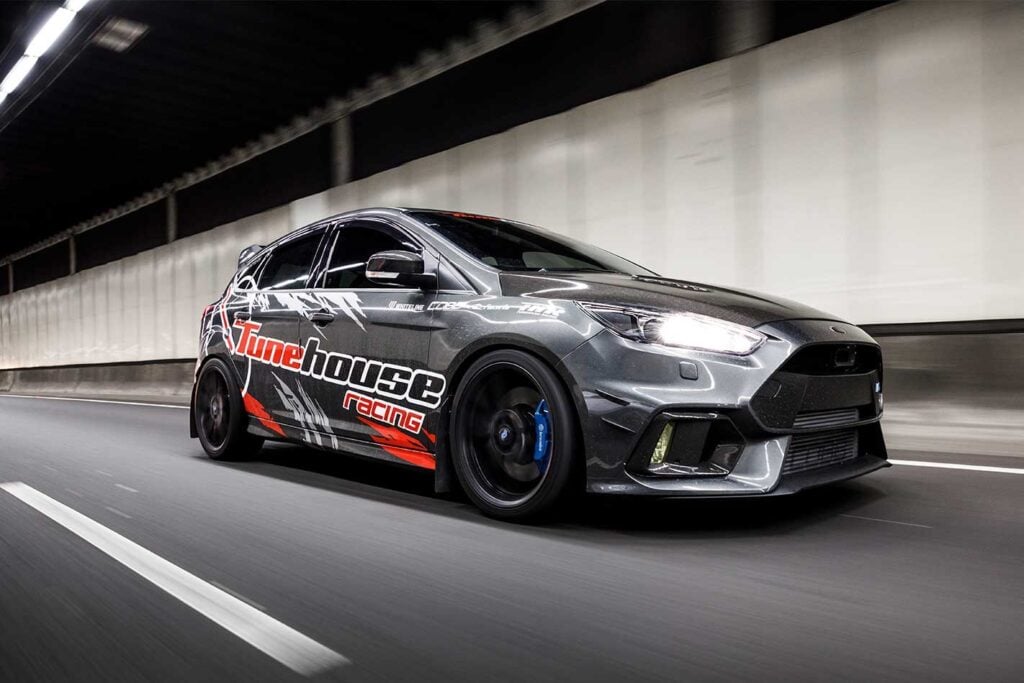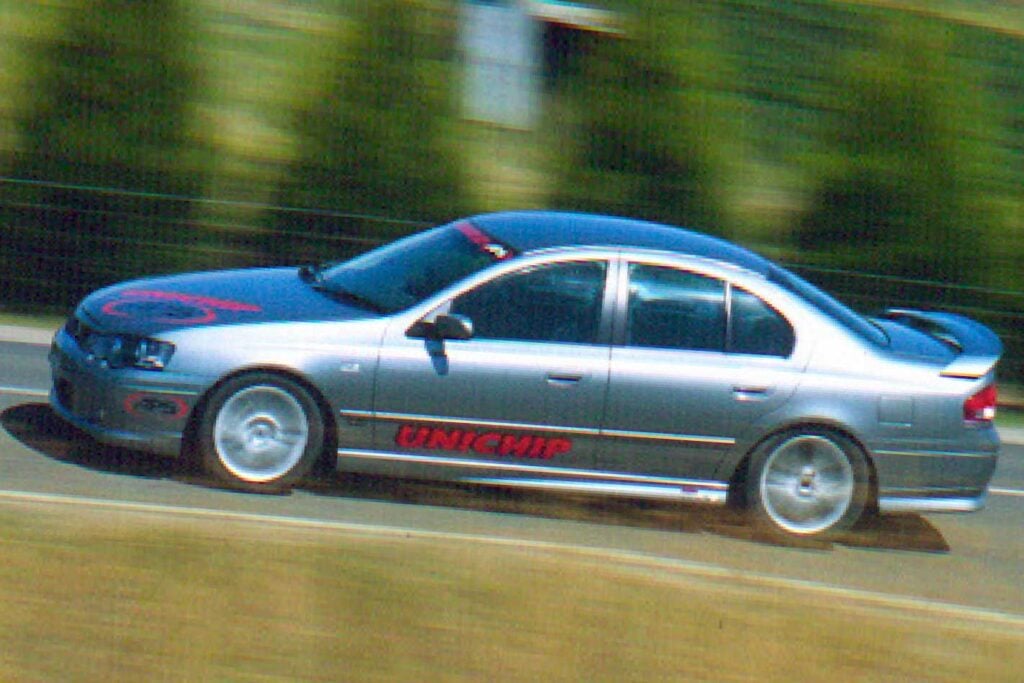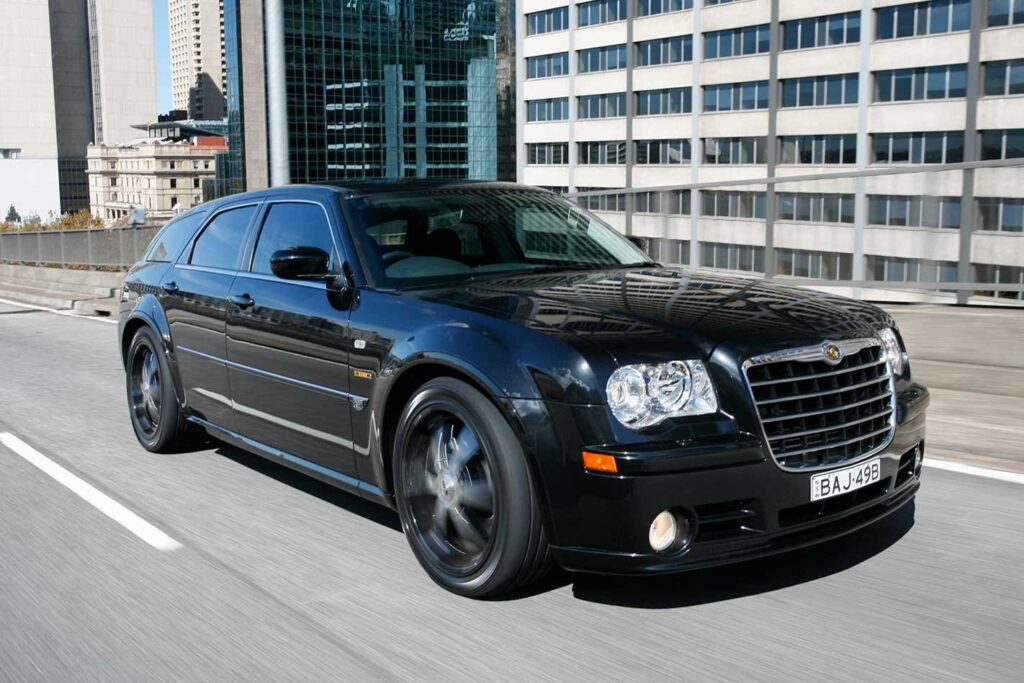For those who have come in late, the biggest, baddest and wettest perpetuation of MOTOR folklore kicked off last issue with a shootout between an 18-strong affordable army of under-$75K contenders.
Of a total 30 contestants, they comprise a whopping 60 percent of the entire Castrol Edge Hot Tuner Shootout 2010 contingent.
And for good reason, too; the wallet-friendly end of motoring makes up a huge chunk Australia’s, and the world’s, tuning business. There’s an ocean of tuning options for the sea of sub-$75K makes and models on the market.
Upwards of $75K, the tuning game becomes more rarefied and exclusive. We’ve capped the group here below the $150K-plus hypercar stratosphere, but it’s still big-dollar material. And with that comes certain customer expectations.
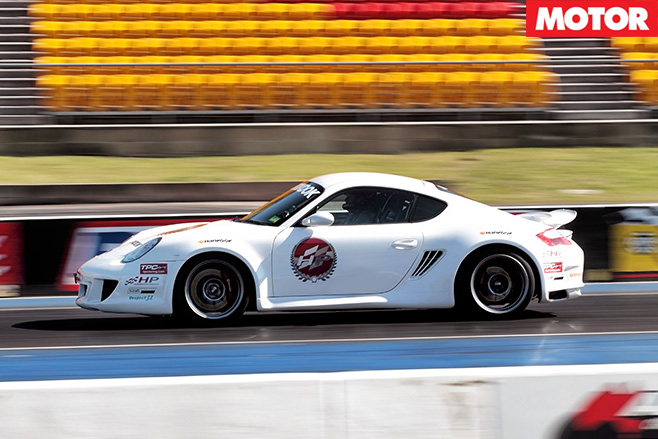
There are seven $75K-$150K competitors but just five different model variants, given a trio of quite unique C63 AMGs. By weight of numbers, they prove the most popular tuned car in the field.
But, boy, could you possibly find more variety across just five cars? One Aussie, a lone Yank, a single Brit and a pair of German offerings. Even at the lower end of the $75K-$150K price scale, you couldn’t find two more polar opposites than the hefty 6.2-litre blown-V8 HSV GTS and the screaming 1.8-litre, huffered, four-banging featherweight Lotus Elise 111R presented here.
Despite also sharing 6.2-litre V8 engine capacity and pricetag, with both just scraping under the $150K ceiling, could you find two more different muscle cars than the AMGs and Chev’s Camaro? But the real attention-grabber of the field is the extraordinary Harding Performance Cayman S.
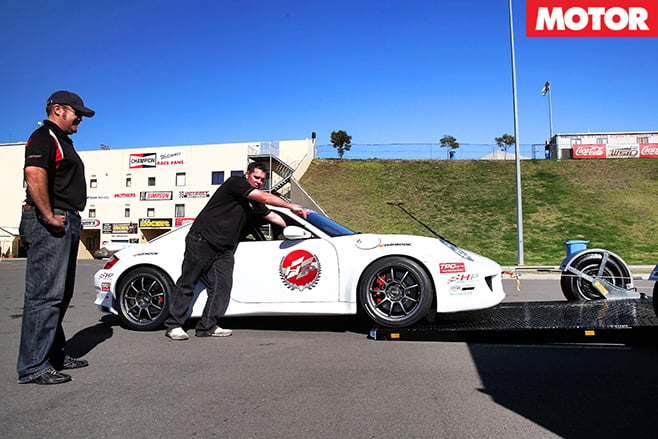
Add the neat GT3-style bobtail and nosecone, a full roll-cage and one-piece Recaro race seats and it looks ready to grid up for a Le Mans enduro – and to monster the Eastern Creek circuit’s curves.
First up, though, is the strip. And using of one of TPC’s 550HP (410kW) Stage 2 Turbo Kits to do the hard grunt work. That’s roughly 180 percent of a stock Cayman S’s horsepower! Mods cost: $40K.
By the second run, Morley wrings a 12.28sec pass at 199.7km/h, but clearly the wheel-spinning Cayman isn’t a happy camper. Our Dave, though, reserves his plaudits not for the time, but for its engine’s delivery. “This engine feels so linear,” he says, “that it doesn’t even feel turbocharged.”
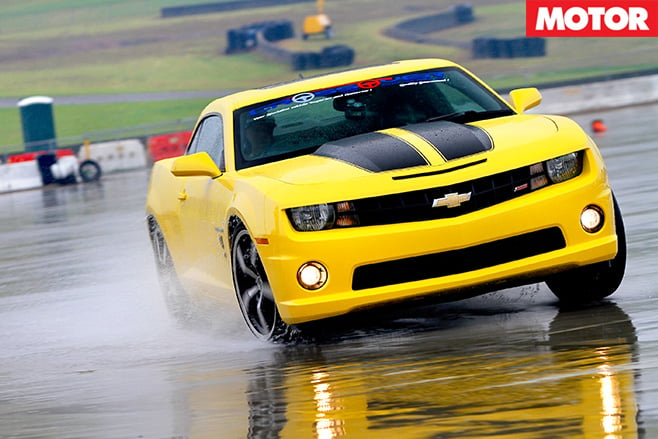
“Dave’s the only bloke in Australia to have ever broken that particular component,” laughs the ever-jovial Guy Harding. A mercy dash to Newcastle results in “the wrong part” and, ruefully, Australia’s most wildly modded Cayman spends the remainder of the event parked. It’s Hot Tuner’s only DNF. Meanwhile, the HP crew turns attention to its pair of sub-$75K Golfs.
Crossover Car Conversions’ Camaro marks a huge contrast. It has no more go, grip nor stop than GM intended, yet it does have, engineering -wise at least, perhaps the most extreme fettling a normal car gets: a ‘mirror-image’, OE-quality, left-to-right-hook conversion. Cost is $35K. Complete turnkey ‘Transformer Pack’ Camaro SS: $148K.

“It drives just like a Commodore,” says Paul Morris, in a good way. “It’s more driveable than the Walkinshaw GTS,” which, incidentally, pulled a group-smashing 367.8kW at tyres on the Dyno Dynamics rollers, compared with Camaro’s mere 203.8kW, which was the lowest of the group.
The Camaro pulls a stunning third-quickest lap time (2:11.7), a full 2.7sec quicker than the WP GTS. And its 51.8sec motorkhana time is also a bronze medal effort, just 0.7sec off winning pace.
“You just give it full throttle and let it run,” Morris summarises about the Chev’s circuit prowess. “It just gets on with the job.” And in ways Simply Sports Cars’ Elise can’t.
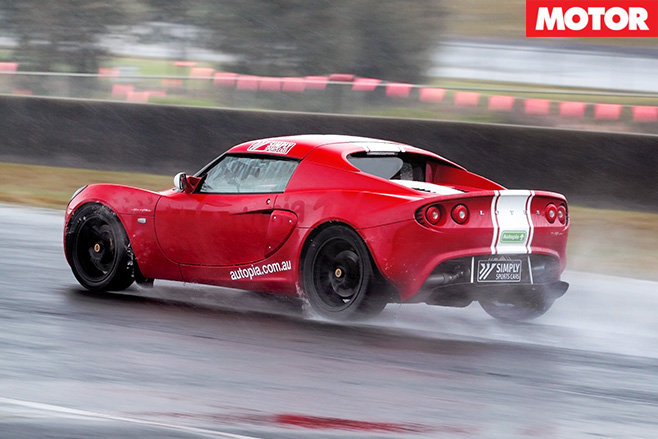
But so many of its $35K enhancements (on an $85K Lotus 111R baseline) simply don’t function in monsoonal conditions. It’s built to rev to over 8000rpm, yet its dry Kumho R-specs cry freedom above five grand on The Creek’s soggy tarmac. The result? A ho-hum 2:08.6 lap.
But Morris makes no bones about the Lotus’s huge potential: “A lot of fun! One of the best cars I’ve driven. In the dry, nothing would touch it.”
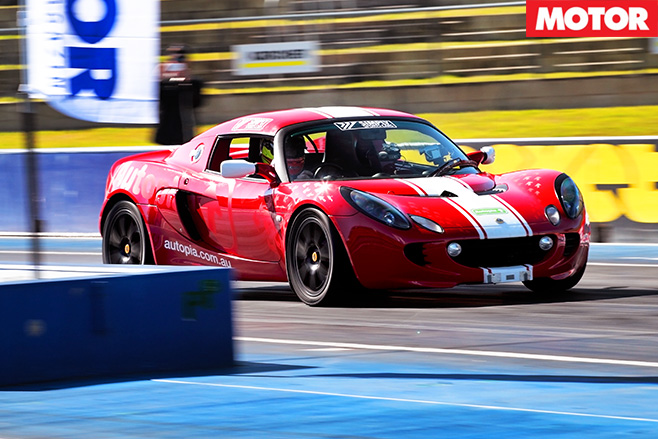
What SSC’s mods add to the Lotus is a really hard-core motorsport vibe. Forearm burning steering, snickety-tight, rose-jointed shift action, bigger track-focused Lotus brakes and a banshee-wailing exhaust shriek that could cut concrete.
At the other end of the scale – both literally and figuratively – is the Walkinshaw Performance ‘E2 Supercar’. But the full-fruit, luxo-headbanger’s all-round performance prove that getting caught out with a good car in poor conditions isn’t exclusive to SSC’s Lotus. Or anyone else.
This beast has changed very little since gracing MOTOR’s cover in March. It has the same WP190 four-lobe (Eaton) supercharger with 0.56bar of boost, water-to-air intercooling, ECU retune, LS7 camshaft, big, stepped headers and fat dual-3.0-inch bi-modal exhaust. It’s yours for $33K, which includes slick 19s loaded with Michelin Pilot Sport Cups – an awesome tyre in the dry but noticeably handicapped for grip when faced with standing water, as all cars fitted with Cups find.
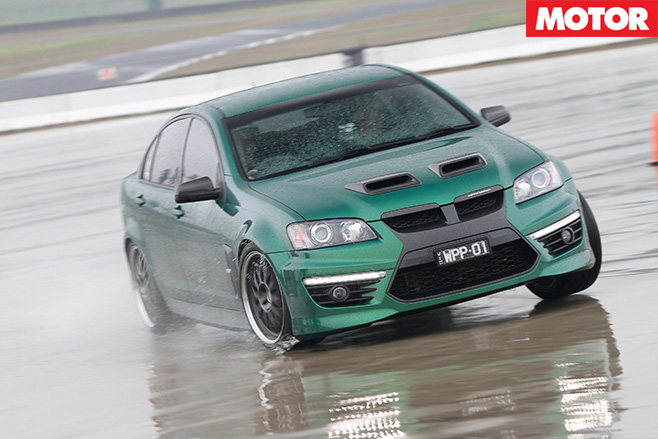
Morley wrings a 4.84sec for 0-100 and 12.78 for the standing 400, respectively 0.6 and 0.3 slower than the car ran in the March issue. Point the finger wherever you wish, but Blind Freddy could see that all the horsepower in the universe is still going to stumble over a hurdle of nearly 1.9 tonnes of mass, particularly when channelled through only two wheels. And 12.8sec is bloody handy for such a heavy road car.
The R-spec rubber and wet conditions simply make mass management that much trickier. The WP GTS struggles around The Creek in 2:14.4, the fourth-slowest time of the entire 30-strong field. And yet its top speed down the straight of 221.55km/h is right up there in the big numbers. On corner speed, though, the pace clearly isn’t there. Once again, Blind Freddy…
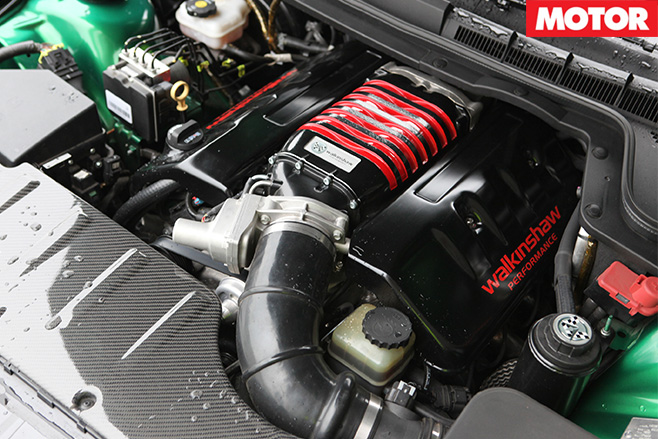
Its skidpan performance relative to the entire field, though, is impressive. Its 52.1sec puts the GTS right in the mid-field, and it’s actually quicker than any of the pricier $150K-plus competitors! That’s bearing in mind that this is essentially the heaviest car of the field, pumping out the most grunt at the treads.
Yep, that’s right. Despite Hale expressing some disappointment with the actual dyno number, its robust 367.8kW at the treads topped everything. All of which leaves us with three AMG siblings.
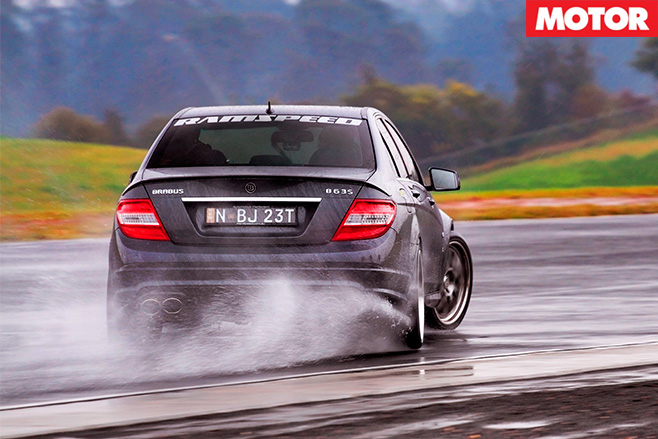
In standard form, we know that it’s a modern classic. And a future collectible, guaranteed. It might have only taken one modified version fronting up to Hot Tuner to display, in no uncertain terms, the serious tuner potential under the unassuming C-class skin. A cynic might even call it a fluke.
But, having three C63s show up, all kicking serious bum in outright terms, cements the sedan’s legend firmly. What is amazing is that all three have been tailor-tuned for different types of customers, and yet all bullied themselves to the sharp end of the standings. The key to it all is that 6.2-litre V8 engine.
Put simply, AMG created an engine that could fit across its range. So, excepting a few details, the 420kW/650Nm version powering the SLS halo car is very similar to the 336kW/600Nm version that’s bolted into the C63. That’s right, they detune the (importantly) smallest, lightest, least-expensive mega-Merc to ensure it won’t out-punch or out-perform larger and pricier AMG-spanked Es, Ss, CLs, SLs and even the ML-Class jobbies.
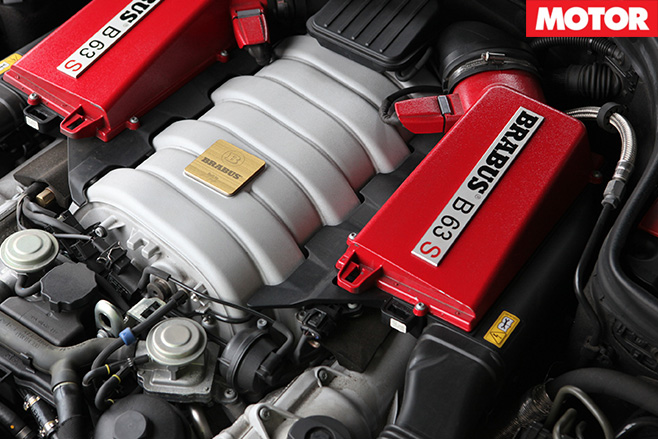
Try up to 100 bonus kilowatts! And out of a series-production naturally-aspirated donk. The least powerful of the trio, the gunmetal grey example tuned by RamSpeed spins the dyno rollers to an impressive 294.8kW, less than 10kW shy of a figure Evolve Tecknik’s V8 E92 M3 can muster with the aide of a supercharger.
It’s copped a complete Brabus package that’s developed in and imported from Germany, dubbed the ‘B 63 S’ package, which in its entirety comprises a B 63 S ECU (which handily raises the rev-limiter), a custom remote-controlled bi-model 3.0-inch exhaust system with Brabus Sport cats, and a Sport air filter. But for the addition of a mechanical LSD and a set of HRE 19-inch rims shod with 245-front/275-rear Pirelli P Zero all-weather rubber, that’s all she wrote.
It even rides on standard AMG suspension. I suppose you’d call it a ‘gentleman’s tune’. From its ride and quietness, to the completely linear throttle take-up, you’d really have to A-B the Brabus with stockies to see that it was quicker.
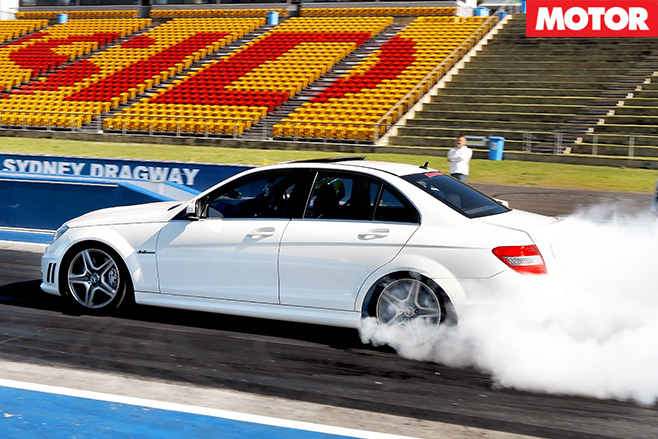
Then you whip out the stopwatch. Its 2:11.3 lap around the circuit is third-quickest in the group, and more than three seconds quicker than WP’s GTS. Then it scampers around the motorkhana cones with a 51.6sec for a class second place. It’ll fire to 100 in 4.2sec and flash by the 400m mark in 12.27. And it does it all with such minimal fuss and real-world certainty that you could throw the keys to Nanna for safe passage to bingo, even if the venue it takes place in is Thredbo, in winter.
The only really frosty bit is the price. The B 63 S makeover will set you back a cool $28K. But while you won’t see the money in hardware, you’ll definitely feel its worth in the OE-like polish. “The suspension is the best bit,” says Morris. “It’s a really great touring car.”
If there was a Super Stealth award to be handed out (there isn’t), it would land in the hands of the crew from Marrano’s Enhancement Division for its white C63. But for the obvious lowering job courtesy of a set of coil-over dampers and sticky dry-weather Toyo Proxes R888 R-spec rubber, it looks stock, right to its exhaust tips. Then you prod the Start button and its 6.2 kicks into a creamy, low-pitched burble, and you sense that we’re not in Stuttgart any more, Toto.
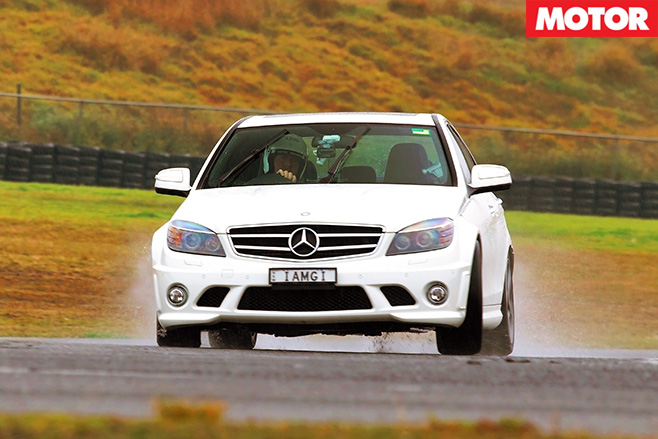
The cut-slick Toyos don’t play ball on the skidpan, and its 52.3 makes it the slowest of the Mercs … just. But the white C63 springs its revenge on the circuit with the group’s top lap time, a very handy 2:08.2. “This is way quicker than the other two (C63s),” Paul enthuses. “I has great low-down torque.”
And it’s this torque – or, specifically, added urgency in low-rpm throttle response – where the Marrano’s tune shines. It’s a hugely driveable car at any speed and any rpm point, but also has a jackhammer mid-range surge that lunges the Merc forward with just a squeeze of the right foot.
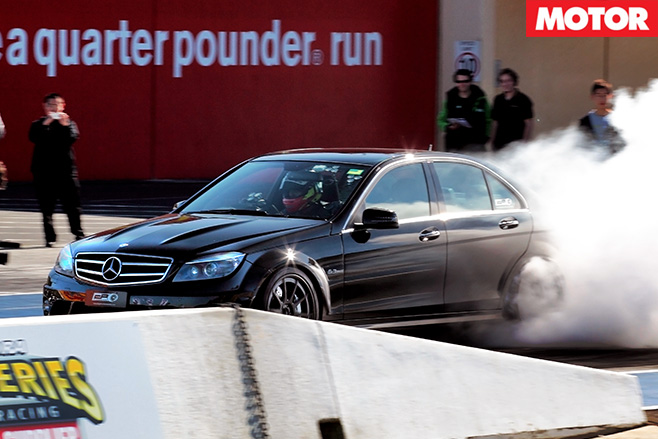
Getting out of the hole is another of this particular C63’s talents. On the dragstrip, the Marrano’s beast marches promptly to 100km/h in a fraction (7/100ths) more than four seconds, and eclipses the 400m mark in a smart 12.07sec.
What separates RamSpeed’s and Marrano’s AMGs is that the former is targeting well-to-do daily drivers keen on a bit of extra all-round performance and the cache that comes with attaching the Brabus badge to its bootlid.
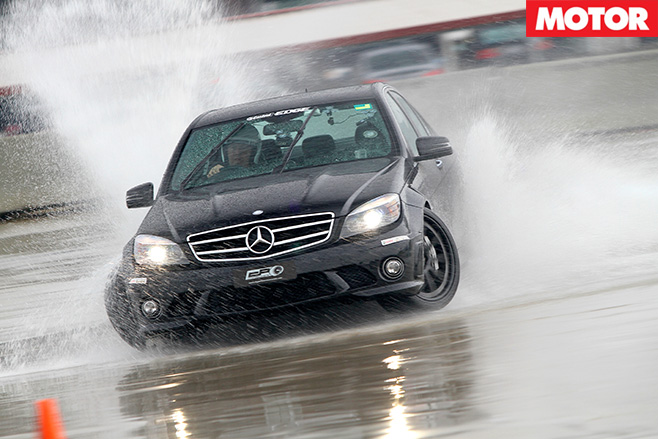
There’s nothing coarse or compromising about either when it comes to real-world streetability (though you’d probably want a set of all-weather hoops under the white car if you wanted to venture into public, day in and day out).
You can drive either to the track, unleash near-supercar levels of performance, and then drive them home again in a peak-hour crawl. And the same cannot be said about many of their competitors this year, some of which would rarely, if ever, see double-whites or traffic lights.
To find out exactly how hard the C63 trio pushed the top 10 outright placings – well, okay then, the top six positions – you’ll have to wait until the December issue. But it was pretty clear to everyone involved with this year’s shootout that two of the AMGs we’re holding back on the reins to keep things sensible, while another (see over) was going for the jugular.


